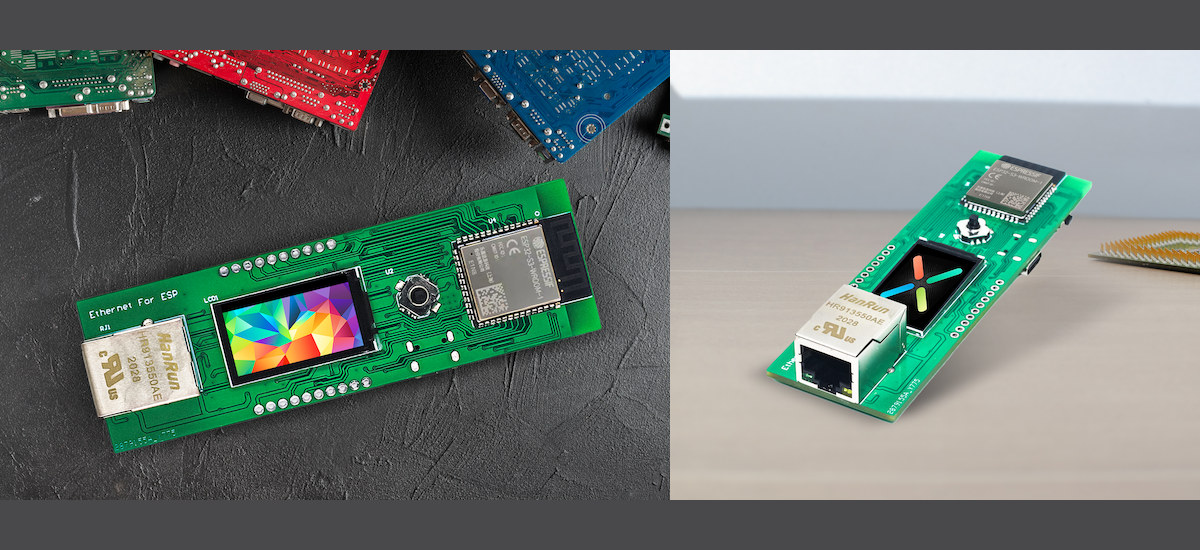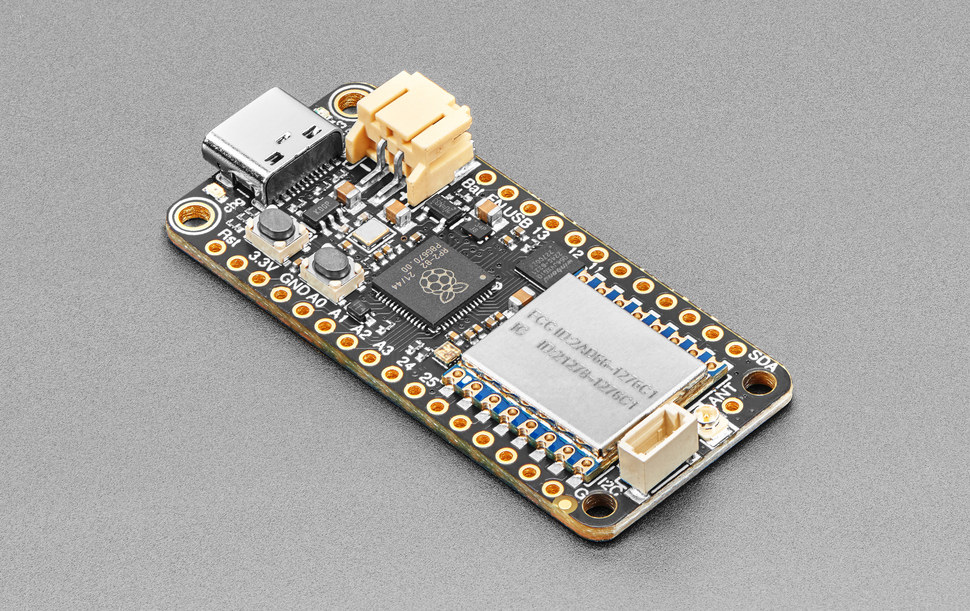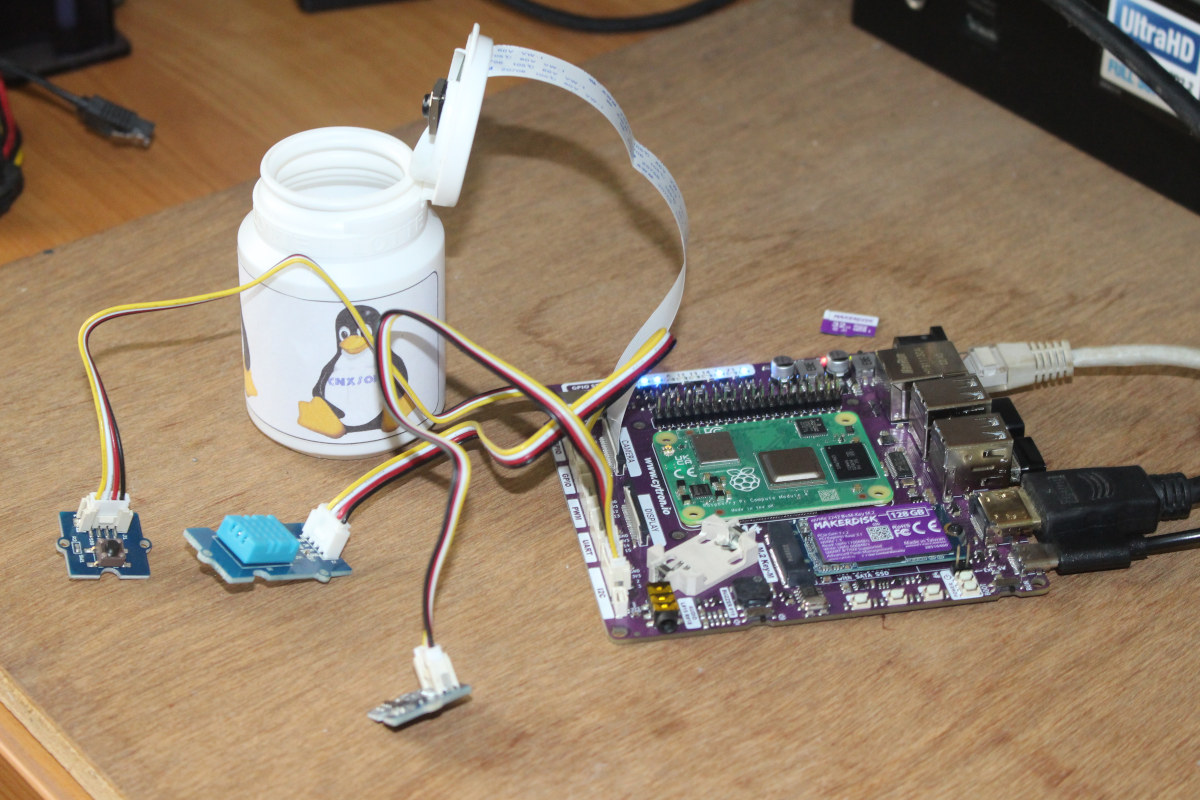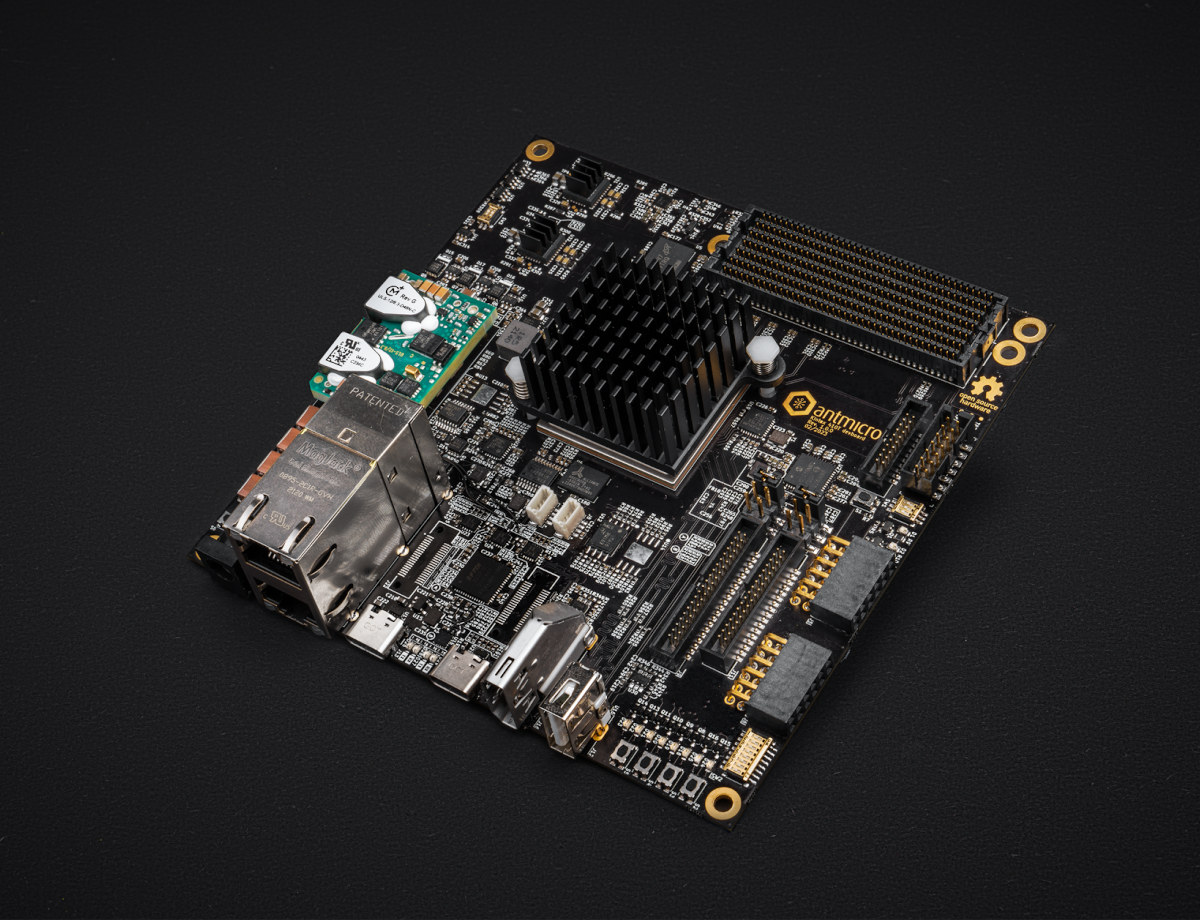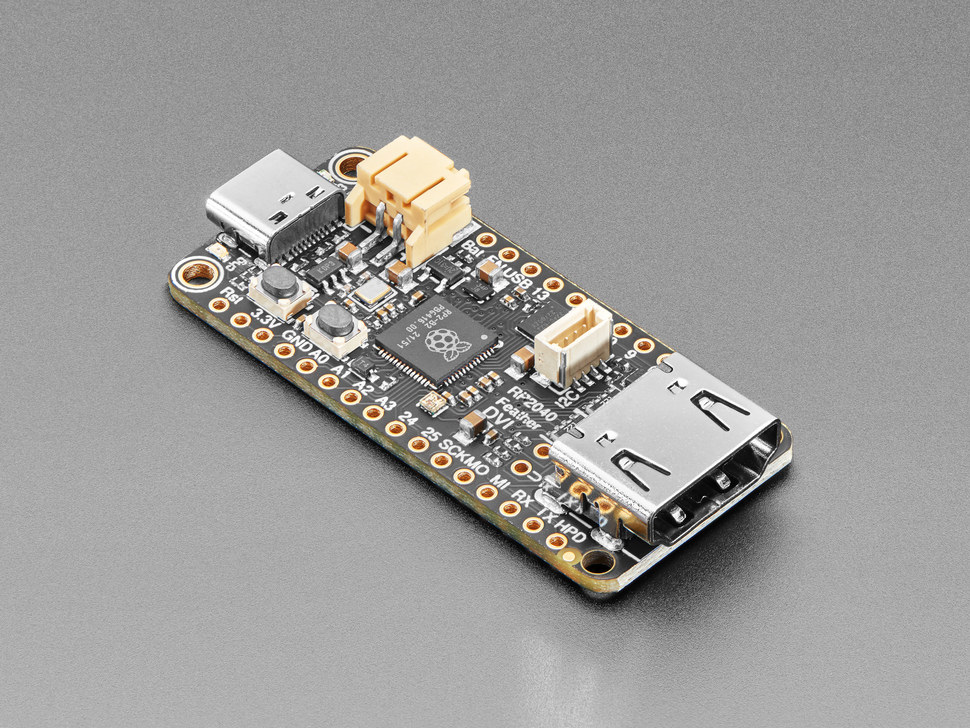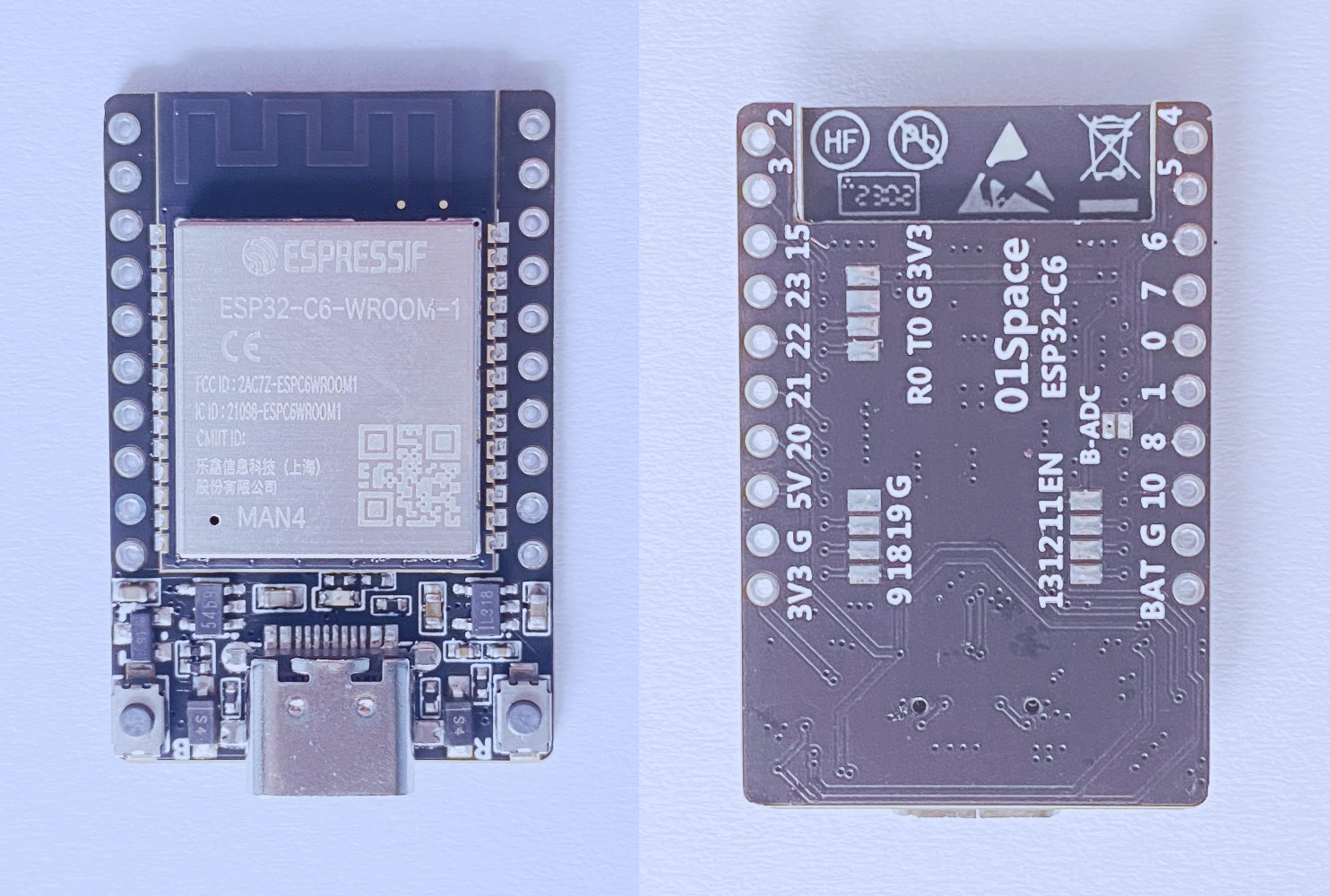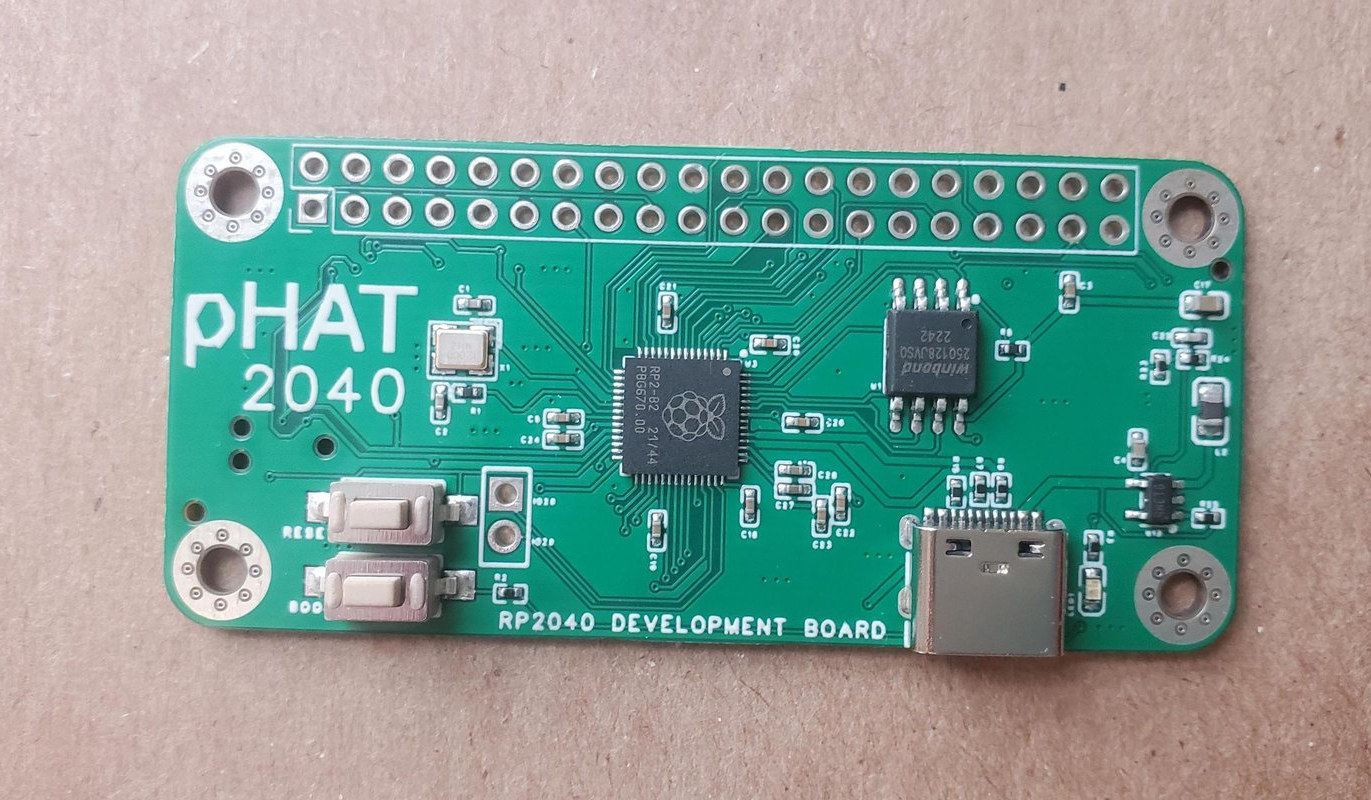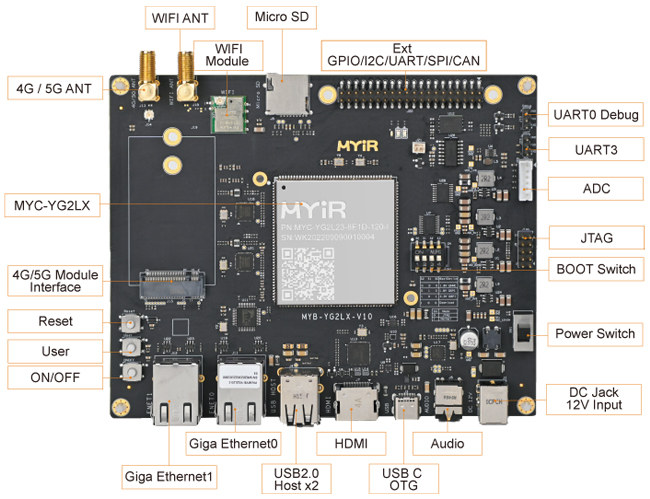SB Components’ ESPi is a WiFi-enabled Ethernet board with a 1.14-inch information color display either coming with an ESP32-S3 WiFi and Bluetooth module or designed as a carrier board for the Raspberry Pi Pico W board. I have no idea who needs this, but the ESPi board looks cute and can be used as a 10/100Mbps Ethernet to WiFi (or BLE) gateway with a small TFT display, and there’s also a small joystick on the board to control a potential menu or user interface rendered in the display. ESPi board specifications: Module/Board (one or the other) ESP32-S3-WROOM-1 module with ESP32-S3 dual-core LX7 microprocessor @ up to 240 MHz with Vector extension for machine learning, up to 16MB flash, up to 8MB PSRAM, WiFi 4, and Bluetooth 5 with LE/Mesh Raspberry Pi Pico W board with Raspberry Pi RP2040 dual-core Cortex-M0+ microcontroller @ 133 Mhz with 264KB RAM, 8MB SPI flash, […]
Adafruit Feather RP2040 with RFM95 LoRa Radio launched for low power long range IoT communication
Adafruit has designed a new variant of the Feather RP2040 board with the “Adafruit Feather RP2040 with RFM95 LoRa Radio” featuring a 900 MHz RFM95 “RadioFruit” module and following the “Adafruit Feather RP2040 with DVI Output Port” that we covered last week. The board ships with 8 MB of QSPI flash, supports USB-C or LiPo battery power, is offered in the familiar Feather form factor, and the built-in RFM95 module supports 433 MHz, 868MHz, and 915MHz frequencies, selectable by firmware, for global coverage. Adafruit Feather RP2040 with RFM95 LoRa Radio specifications: MCU – Raspberry Pi RP2040 dual-core Arm Cortex M0+ microcontroller @ 133 MHz with 264 KB RAM Storage – 8MB SPI flash RFM95 LoRa wireless module Semtech SX127x LoRa transceiver Frequency bands – License-free ISM bands: ITU “Europe” @ 433MHz and ITU “Americas” @ 900MHz. (CNXSoft: it looks 900 MHz here means 868 MHz (EU) and 915 MHz (US), […]
Cytron CM4 Maker Board review – Part 2: NVMe SSD, RTC, Buzzer, Grove modules, ChatGPT…
We’ve already checked out Cytron’s CM4 Maker Board kit with a Raspberry Pi CM4 system-on-module and booted the system with the included 32GB “MAKERDISK” Class 10 microSD card preloaded Raspberry Pi OS in the first part of the review. For the second part of the CM4 Maker review, I’ve mostly used the 128GB NVMe SSD provided by the company and played with other features of the board including the RTC, the buzzer, some Seeed Studio grove modules, and even got help from ChatGPT for one of the Python programs I used. Booting Cytron CM4 Maker Board with the “MAKERDISK” NVMe SSD I connected several Grove modules with GPIO and I2C interfaces, a Raspberry Pi Camera Module 3, an Ethernet cable, two RF dongles for a wireless keyboard and mouse, an HDMI cable to a monitor, and finally inserted the provided 5V/3.5A USB-C power adapter. The MAKERDISK SSD comes with Raspberry […]
Antmicro releases open hardware AMD Kintex-7 K410T development board, launches open hardware portal
Antmicro has designed an open hardware AMD Xilinx Kintex-7 K410T FPGA development board in KiCad 6 mostly to synthesize custom RISC-V-based processing platforms and work on the OpenTitan Root of Trust project. Separately, the company has also launched an open hardware portal sharing some of the KiCad and Blender designs they’ve worked on over the years. Open-source hardware AMD Xilinx Kintex-7 K410T development board Key features and specifications: FPGA – AMD-Xilinx Kintex-7 K410T FPGA with 400K logic cells, 16 Gigabit transceivers operating at 12.5Gb/s. System Memory – 512MB of DDR3L memory, 8MB of SRAM memory Storage – 32MB (256Mbit) of (Q)SPI NOR flash, assembly option for 2x QSPI flash, microSD card slot Video Output – HDMI port Networking – 1x Gigabit Ethernet RJ45 port, 1x 10/100M Ethernet port USB USB 2.0 Type-A host connector USB Type-C connector for FTDI JTAG and debug Expansions 2x PMOD connectors FMC+ connector with PCIe […]
$15 Adafruit Feather RP2040 with DVI Output Port connects to your HDMI TV or monitor
“Adafruit Feather RP2040 with DVI Output Port” is another Raspberry Pi RP2040 board with an HDMI port that can output DVI video signal (no audio) to most TVs or monitors with an HDMI input port thanks to the PicoDVI project. The board builds upon the company’s Adafruit Feather RP2040 with the HDMI port adding just a few dollars. Adafruit Feather RP2040 with DVI Output Port specifications: MCU – Raspberry Pi RP2040 dual-core Arm Cortex M0+ microcontroller ~125 MHz (but it should be overclocked for DVI output) with 264 KB RAM Storage – 8MB SPI flash Video Output – 1x HDMI port for DVI output up to 320×240 or 400×240 resolution with 16-bit pixels, I2C signals to read EDID data, plus CEC and Utility pads broken out USB – 1x USB Type-C port I/Os Adafruit Feather compatible headers Up to 21x GPIOs 2x I2C, 2x SPI, 2x UART 4x 12-bit ADC […]
Tiny ESP32-C6 IoT board supports 2.4 Ghz WiFi 6, Bluetooth 5.0 Low Energy, and 802.15.4 radio
01Space has designed a tiny ESP32-C6 IoT board with WiFi 6 and Bluetooth LE 5.0 connectivity built around the ESP32-C6-WROOM-1 wireless module, and exposing I/Os through two 10-pin headers. Espressif launched their ESP32-C6 modules and development kits last January, and the 01Space is the first third-party ESP32-C6 board we’ve covered. It’s a minimal board with a wireless module, a USB Type-C port for power and programming, and Reset and Boot buttons. 01Space ESP32-C6 board specifications: Wireless module – ESP32-C6-WROOM-1-N4 module with Espressif Systems ESP32-C6 single core 32-bit RISC-V processor @ 160 MHz with 2.4 Ghz WiFi 6 1T1R, Bluetooth LE 5.0, and 802.15.4 radio for Zigbee/Thread/2.4GHz proprietary Storage – 4MB SPI flash Onboard PCB antenna USB – 1x USB Type-C port for power and programming I/Os – 2x 10-pin headers with UART, I2C, I2S, RMT (TX/RX), LED PWM, USB Serial/JTAG controller, etc… 5V, 3.3V, VBAT, GND Misc – Reset and […]
Raspberry Pi RP2040 pHAT board comes with a 40-pin GPIO header
0xC0FFEE’s RP2040 PHAT is both a Raspberry Pi RP2040 development board and a pHAT for Raspberry Pi and Pi Zero Linux SBCs that exposes the I/Os through the 40-pin GPIO header traditionally found in Raspberry Pi single board computers. The board comes with all features of the Raspberry Pi Pico board including a USB port for power and programming, an SPI flash, and a BOOT button, but also adds a Reset button. That means it’s software compatible, except for the user LED connected to GPIO 26, and works with the MicroPython and C SDKs, as well as the Arduino IDE, Zephyr RTOS, and more. RP2040 pHAT specifications: MCU – Raspberry Pi RP2040 dual-core Cortex-M0+ microcontroller @ 133 MHz with 264KB SRAM Storage – 128Mbit SPI flash (based on the chip in the photo above) USB – 1x USB 1.1 Type-C port used for power and programming Expansion – 40-pin Raspberry […]
Renesas RZ/G2L CPU module targets HMI and IoT gateway applications
MYIR MYC-YG2LX is Renesas RZ/G2L CPU module with up to 4GB DDR4, 32GB eMMC flash, and various I/Os such as gigabit Ethernet, USB 2.0, camera and display interfaces accessible through 222 castellated holes, and designed for advanced HMI, IoT edge gateways, and other embedded devices with video capabilities. As a reminder, the Renesas RZ/G2L microprocessor comes with up to two Arm Cortex-A55 cores clocked at 1.2 GHz, one 200 MHz Cortex-M33 real-time core, a Mali-G31 GPU for 3D graphics interfaces, and a VPU capable of H.264 encoding/decoding. The company also offers the MYD-YG2LX development board based on the 45x43mm MYC-YG2LX CPU module with easy access to its interfaces. MYIR MYC-YG2LX Renesas RZ/G2L CPU module MYC-YG2LX module specifications: SoC – Renesas RZ/G2L (R9A07G044L23GBG) dual-core Cortex-A55 processor with Cortex-M33 core @ 200 Mhz, Arm Mali-G31 GPU, H.264 hardware video decoding/encoding System Memory – 1 or 2GB DDR4 (option for up to 4GB) […]


